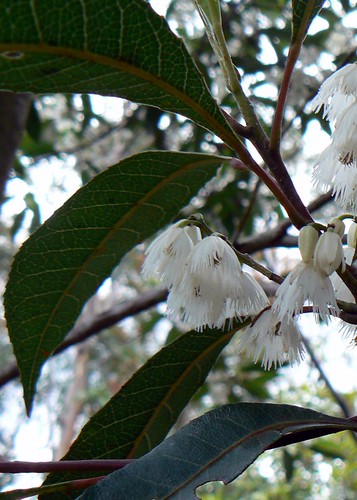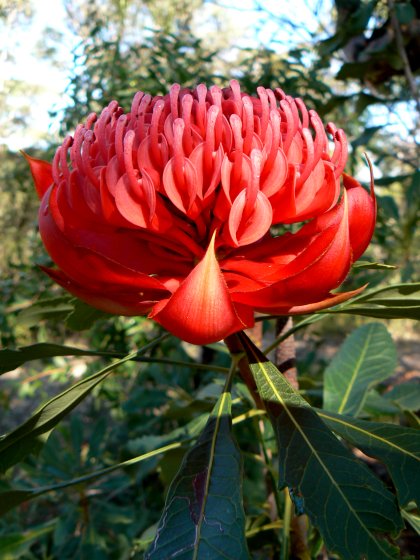I've also just been appointed to an exciting new job as a part-time research assistant with Dr Chris Lusk, starting late July. Chris is researching juvenile rainforest plants, and later this year we're off to some fabulous locations to do field work, including western Tasmania. That part of the world boasts some of the most ancient and pristine rainforests on the planet. I touched the edge of them a few years ago, on a family holiday to Tassie. It's almost impossible to express just how beautiful Tasmanian wilderness is. So I'll content myself with some photos of that trip.
The Gordon River, Western Tasmania
Huon Pine rainforest.
To return to this place with a botanist's eye is a thrilling prospect.
But almost as alluring as all this is the chance of spending more time in the garden. The Forest of Sabine is growing apace, and I'm starting to think about filling in the gaps between the trees and shrubs--and things for planting in any other spots I can find. I've been amassing seeds and once the weather warms up I'll be germinating them in the shade-house.
The seeds so far:
- Lomandra filiformis, a graceful monocot with thin, strappy leaves with a beautiful bluey-green tinge.
- Poa labillardierei, Common Tussock Grass.
- Dianella caerulea, Paroo Lily or Blue Flax-lily. It's a useful clumping monocot with small but spectacular blue and yellow flowers.
- Anigozanthus flavidus, Kangaroo Paw. This is a bit of a cheat. It's not local, but comes from Western Australia. And it needs lots of sun, so won't work in among all the other plants. But I love it, and who wouldn't? Fabulous flowers, unlike anything else you'll find.
- Elaeocarpus reticulatus, Blueberry Ash. A small tree with delicate white or pink flowers. We already have one (white flowered, as you can see), but who could resist more?
- Telopea speciossima, Waratah. We don't actually need any more of these because the Forest of Sabine is brimming with them, but I thought if I could grow a few they'd make nice presents for plant-loving friends. Here's a shot we took of one in nearby bushland.
- Callistemon viminalis, Weeping Bottlebrush. Just because they're beautiful.
Finally, I'm going to spend more time blogging about plants and science. Those nice folk at 3 Quarks Daily have inspired me!




No comments:
Post a Comment